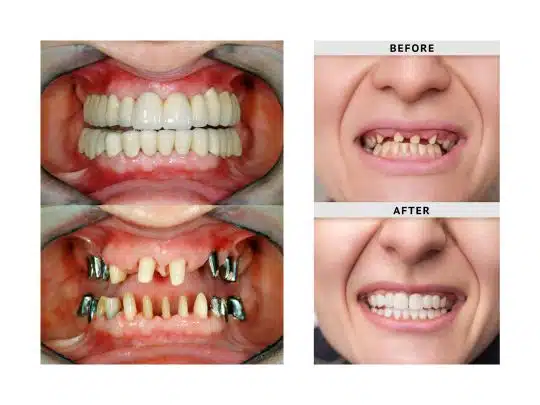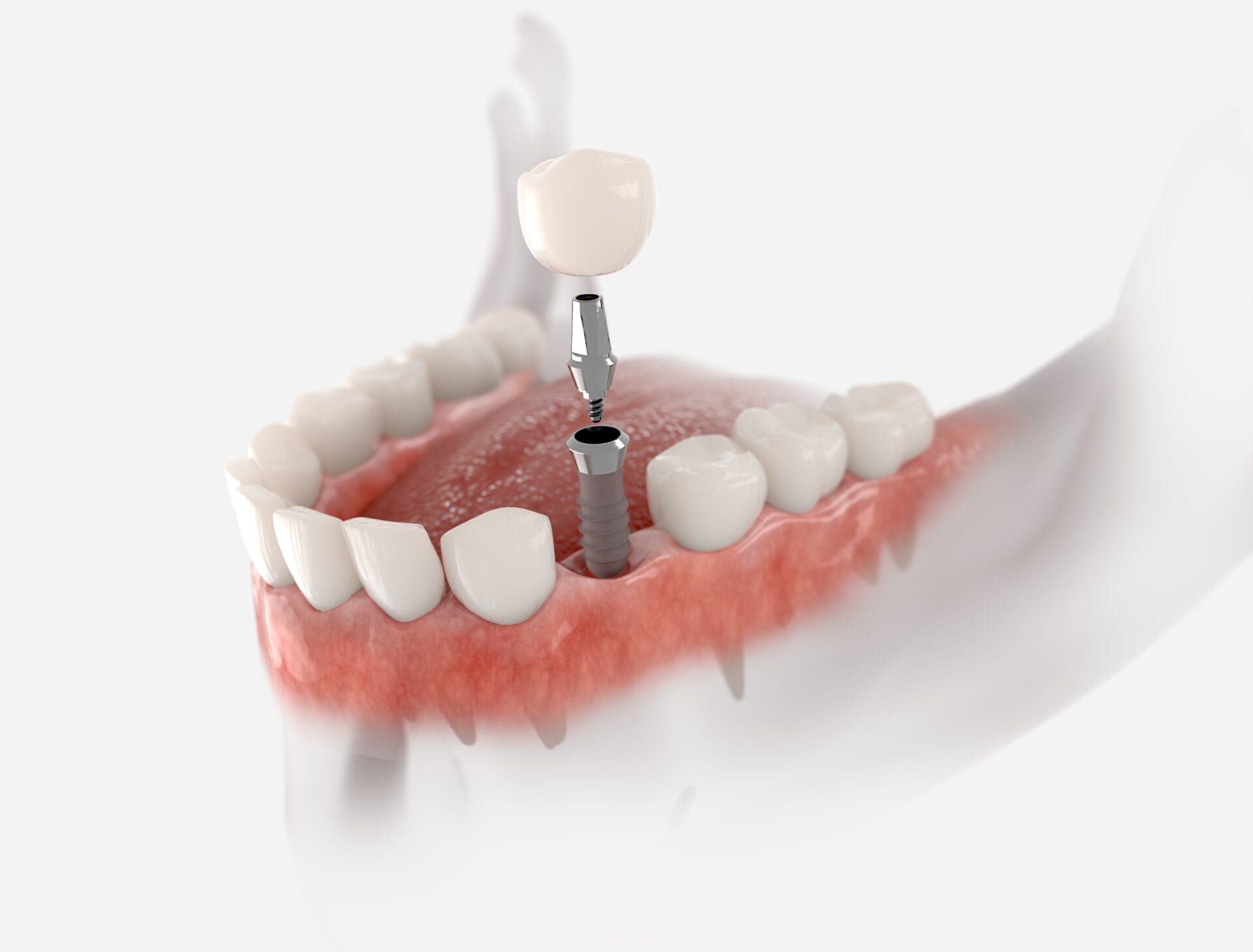Restore Your Smile with Dental Implants Kent: Specialist Solutions
Restore Your Smile with Dental Implants Kent: Specialist Solutions
Blog Article
Experience the most recent Advancements in Dental Implants Modern Technology
As the area of dentistry proceeds to evolve, the developments in dental implant modern technology have actually been nothing except exceptional. From the use of advanced products that improve longevity to the execution of digital imaging for specific placement, these innovations are changing the landscape of oral treatment. With minimally invasive medical strategies and the modification capabilities of 3D printing, patients currently have access to customized services that were once inconceivable. The integration of technology is revolutionizing the capability of oral implants, assuring improved end results and person complete satisfaction.
Advanced Products for Improved Longevity
In the world of dental implants technology, the integration of advanced materials has significantly added to enhancing longevity and longevity of these important oral prosthetics. The usage of materials such as titanium alloys, zirconia, and ceramic compounds has changed the area by providing boosted biocompatibility, resistance, and stamina to deterioration.
Titanium alloys are extensively made use of in dental implants because of their exceptional strength-to-weight proportion, deterioration resistance, and compatibility with the human body. These alloys ensure the security and long life of the dental implant by enduring the pressures applied throughout speaking and eating, providing a trustworthy remedy for people looking for long lasting tooth substitutes.
Zirconia, a sort of ceramic product, has gotten popularity for its biocompatibility and all-natural tooth-like appearance. Its high toughness and resistance to put on make it a suitable option for dental crowns and bridges, improving the general aesthetics and performance of the dental implant.

Digital Imaging for Accurate Positioning
The evolution of dental implants innovation has actually even more advanced with the assimilation of digital imaging methods, making sure exact placement of these prosthetics for optimal functional and visual outcomes. Digital imaging plays an important duty in the preparation and placement of oral implants by giving thorough 3D images of the client's jawbone structure. This modern technology allows dental practitioners to examine bone density, locate important frameworks, and prepare the precise position and angle for implant positioning with exceptional precision.
By making use of digital imaging, dental professionals can create digital surgical overviews that function as a roadmap during the implant placement procedure. These overviews are tailored for every client, taking into consideration their one-of-a-kind makeup and the desired end result. This degree of precision not only enhances the success price of dental implant procedures but also lowers the danger of complications.
In addition, electronic imaging allows dentists to imagine the last prosthetic restoration prior to the actual placement of implants, permitting thorough preparation and making certain that the outcome satisfies the client's visual assumptions. Overall, the integration of digital imaging modern technology has actually revolutionized the area of oral implants, offering individuals an extra foreseeable, reliable, and patient-specific treatment strategy.

Minimally Intrusive Surgical Methods


Advancements in surgical techniques have brought about the development of minimally invasive methods in the field of oral implantology. These techniques aim to lower injury to the individual, shorten recuperation times, and boost general treatment results. Minimally invasive operations entail smaller sized incisions, specialized instruments, and advanced imaging technologies to specifically put oral implants with very little disturbance to surrounding cells.
One key facet of minimally intrusive strategies is making use of guided surgical treatment, where 3D imaging and computer-aided style software are employed to intend the dental implant positioning with terrific accuracy. This permits a more predictable end result and can frequently get rid of the requirement for comprehensive flap surgery.
Additionally, innovations in products and implant layout have actually likewise added to the success of minimally intrusive methods. Implants with boosted surface residential properties click resources advertise faster osseointegration, lowering the healing time needed prior to the prosthetic restoration can be placed.
3D Printing for Customized Solutions
Making use of 3D printing modern technology in oral implantology enables the creation of very customized solutions tailored to private patient needs and physiological variants. This innovative technology allows oral specialists to create and fabricate dental implants with extraordinary precision and precision. By making use of electronic imaging techniques, such as cone beam computed tomography (CBCT), in-depth 3D designs of the client's oral tooth cavity can be produced to guide the dental implant preparing process.
Among the essential benefits of 3D printing in oral implantology is the ability to create patient-specific implants that perfectly fit the special composition of each person. This individualized technique aids boost the overall success and durability of the implant by making sure optimal fit and positioning. Furthermore, 3D printing permits for the manufacturing of intricate geometries and intricate structures that would be difficult or difficult to accomplish utilizing typical production approaches.
In addition, 3D printing technology enables dental check my reference experts to enhance the implantation procedure, minimizing surgical procedure time and boosting total individual experience. With its capacity to develop tailored options swiftly and effectively, 3D printing is reinventing the field of oral implantology, offering patients cutting-edge treatment choices and boosted results.
Integrated Modern Technology for Improved Capability
Carrying out innovative technology in oral implantology improves functionality and accuracy, raising the criterion of take care of patients undertaking dental implant treatments. Integrated innovation plays an important role in boosting the overall success and resilience of oral implants. One essential innovation is the combination of electronic scanning and imaging innovations, such as cone-beam calculated tomography (CBCT) and intraoral scanners. These devices enable for comprehensive 3D imaging of the person's oral frameworks, helping with specific therapy planning and implant positioning.
Additionally, the combination of computer-aided layout and computer-aided manufacturing (CAD/CAM) technology makes it possible for the development of custom-made dental implant restorations with outstanding accuracy. CAD/CAM systems make use of electronic perceptions to create prosthetics that flawlessly fit the client's one-of-a-kind composition, ensuring optimum comfort and capability. In addition, the use of robotic-assisted surgery in dental implant positioning boosts accuracy and decreases the threat of human mistake.
Verdict
Finally, the current innovations in oral implants technology deal enhanced sturdiness via innovative materials, precise placement with digital imaging, minimally invasive medical methods, customized options with 3D printing, and improved performance with integrated technology - Dental implants Kent. These developments in dental implants technology are revolutionizing the area and giving individuals with more efficient and efficient treatment options for restoring their smiles and dental health and wellness
The integration of modern technology is reinventing the functionality of oral implants, promising boosted outcomes and person contentment.
The evolution of oral implants technology has actually further progressed with the integration of digital imaging strategies, guaranteeing specific placement of these prosthetics for optimum functional and visual end results. Minimally invasive medical treatments involve smaller sized incisions, specialized instruments, and progressed imaging technologies to specifically place oral implants with very little interruption to bordering tissues.
Applying innovative modern technology in oral implantology enhances capability and precision, raising the standard of treatment for clients undergoing dental implant procedures. Dental go to my site implants Kent. Integrated technology plays an important role in boosting the overall success and resilience of dental implants
Report this page